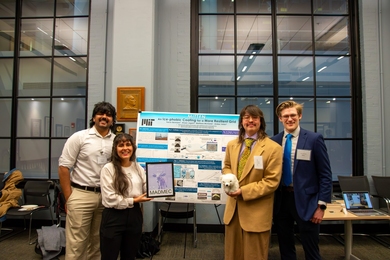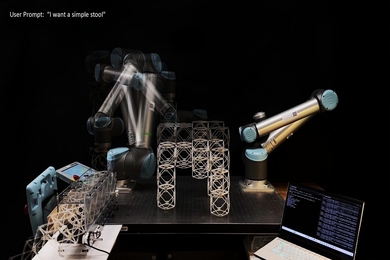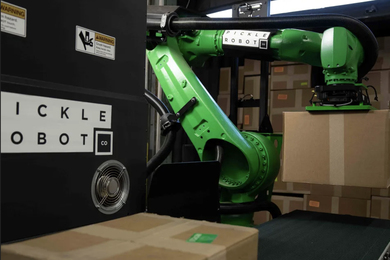A planet-searching satellite planned by scientists from MIT, the Harvard-Smithsonian Center for Astrophysics and NASA-Ames is one of six proposed spacecraft concepts that NASA has picked for further study as part of its Small Explorer (SMEX) satellite program. The planet-searching satellite would have the potential to discover hundreds of "super-Earth" planets, ranging from one to two times Earth's diameter, orbiting other stars.
The six projects, announced last week, were selected from among 32 proposals submitted to NASA in January. Each of the six will receive $750,000 for a detailed six-month feasibility study. In early 2009, two of the projects will get the go-ahead for development at a cost of no more than $105 million, excluding the launch vehicle, with the first launch as early as 2012.
The proposed satellite, called the Transiting Exoplanet Survey Satellite (TESS), would use a set of six wide-angle cameras with large, high-resolution electronic detectors (CCDs) being developed in cooperation with MIT's Lincoln Laboratory, to provide the first-ever spaceborne all-sky survey of transiting planets around the closest and brightest stars.
The satellite would search for stars whose orbits as seen from Earth carry them directly in front of the star, obscuring a tiny amount of starlight. Some ground-based searches have used this method and found about 50 giant planets so far, but a space-based search could detect much smaller Earth-sized planets, as well as those with larger orbits.
This transit-detection method can pinpoint the planet's size by measuring the exact amount of light obscured by the planet. Spectroscopic followup observations can then determine the planet's mass and thus its density, giving clues to its composition, as well as determine its temperature, probe the chemistry of its atmosphere, and perhaps even find signs of life such as oxygen in its air.
Plans for TESS are being led by senior research scientist George R. Ricker, at the MIT Kavli Institute for Astrophysics and Space Research, as Principal Investigator, along with research scientist Roland Vanderspek and Jacqueline Hewitt, MIT professor of physics and director of the MIT Kavli Institute, and professors Sara Seager, Adam Burgasser, Jim Elliot and Josh Winn and others at MIT. TESS is part of a joint effort between the Department of Physics and the Department of Earth, Atmospheric and Planetary Sciences at MIT to study exoplanets. The project also involves scientists at the Harvard-Smithsonian Center for Astrophysics, including astronomer David Latham as Chief Mission Scientist, and Kimberley A. Ennico of NASA Ames Research Center as the Project Scientist.
The NASA Ames Research Center is a full partner in the TESS program. Their Small Spacecraft Division, formed in 2006, specializes in low-cost, rapid development of spacecraft and missions. Additional TESS partners include the NASA Goddard Space Flight Center, the Harvard Origins of Life Initiative, Lowell Observatory, Caltech's IPAC, the SETI Institute, Geneva Observatory in Switzerland, Tokyo Institute of Technology, SUPAERO in France, ATK Space, Espace Inc, and the privately-funded Las Cumbres Observatory Global Telescope Network.
The satellite's high-resolution, wide-field digital cameras are already under development, thanks to a seed grant from Google. The project has also received funding from the Kavli Foundation, the Smithsonian Institution, MIT alumnus Rick Tavan, and other donors. When the satellite is launched, the cameras will cover the whole sky in two years, getting precise brightness measurements of about two million stars in total. The planets discovered by the satellite would provide prime candidates for followup observations by NASA's new James Webb Space Telescope, which is set for launch in 2013.
Statistically, since the orientation of orbits is random, about one star out of a thousand will have a planet whose orbit is oriented so that the planet regularly crosses in front of the star, resulting in a "planetary transit". So, out of the two million stars observed, the new observatory should be able to find more than a thousand planetary systems within two years.
"Because the TESS survey will systematically examine the entire sky for stars harboring exoplanets, the resulting TESS Transit Catalog will constitute a unique scientific legacy. Decades or even centuries after the survey is completed, it is likely that TESS-discovered super-earths will continue to be studied because of their proximity to Earth, and because their stars are so bright," Ricker said.





